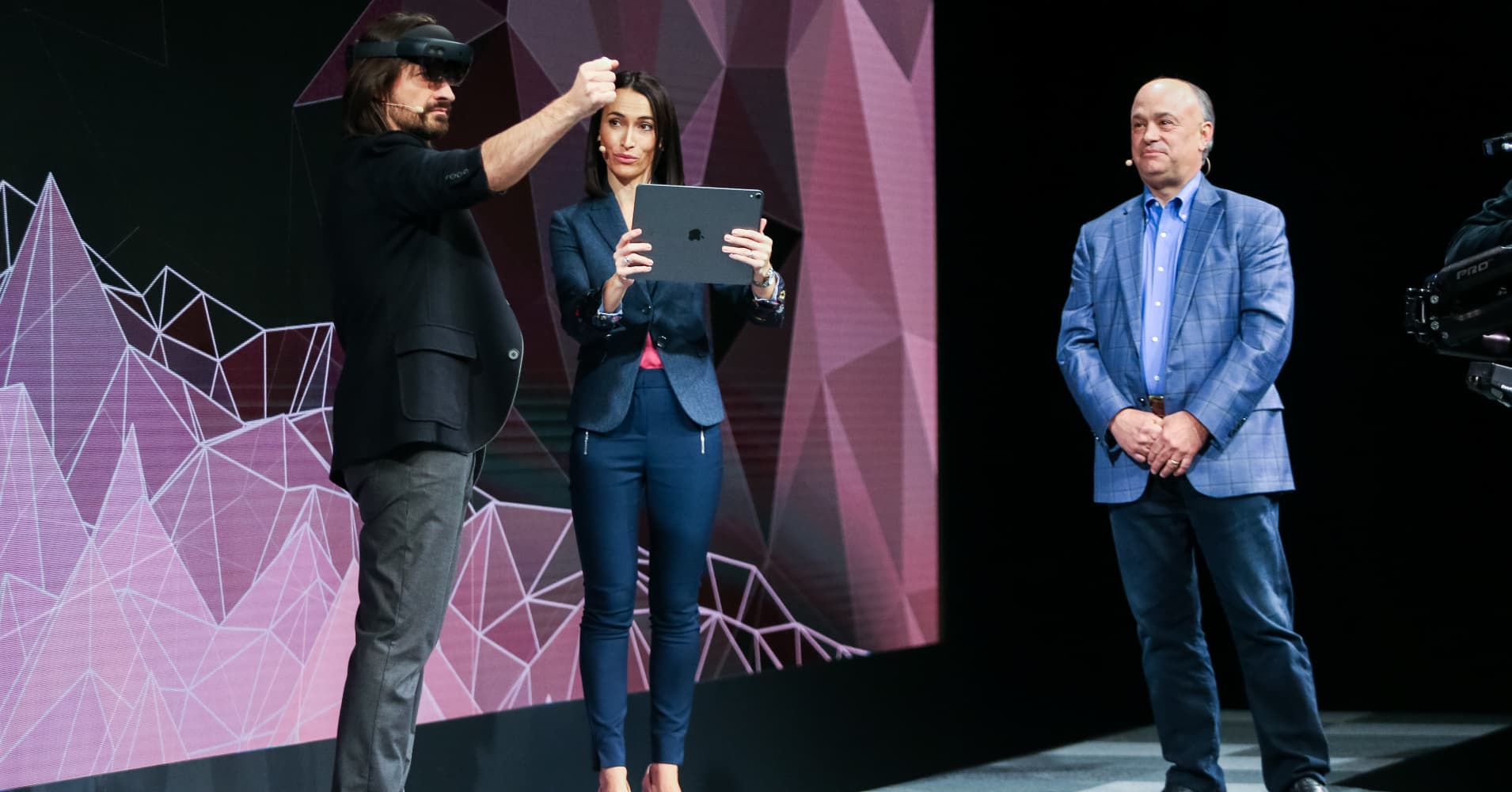
In 2015, when Microsoft unveiled its furutistic HoloLens, the company showed how people could watch movies and play games, make Skype calls and check the weather in Hawaii with it. It was one of the first real-world demonstrations of an augmented reality device, where computer-generated images are superimposed over the real world like holograms.
On Sunday, when Microsoft showed off the next generation of the HoloLens, these fun sorts of things were gone.
What Microsoft did have to show off was a wall of logos, and examples of how the HoloLens 2 could be used in construction, industrial equipment monitoring and surgeries.
Microsoft's Sunday presentation at Mobile World Congress, a mobile trade show in Barcelona, mirrored the high-level bets at Satya Nadella's Microsoft. Other presentations at the show focused on phones with fancy new form factors to wow consumers, like Huawei's folding phone and LG's phone with two screens. But Microsoft took its most futuristic technology and showed how it could be applied toward making businesses more productive.
On Sunday, Microsoft technical fellow Alex Kipman, often referred to as the father of the HoloLens, watched on the side of the stage as Microsoft customers brought their own customers onstage and ran through demonstrations at the Mobile World Congress conference in Barcelona. For instance, Mattel's technology chef, Sven Gerjets, donned a HoloLens as he talked about how designers, marketers and other employees could collaborate on toy development virtually with the device.
Microsoft also showed off a new camera with artificial-intelligence capability on Sunday. The Azure Kinect draws on some of the same core technology introduced with the Kinect game sensor that came out several years ago, but on Sunday there were no illustrations of how the new device could come in handy for games.
Cloud has been another highlight for Nadella's Microsoft, beginning with his "mobile-first, cloud-first world" mantra from 2014, and Microsoft has introduced several services that can be used in the place of offerings from market-leading cloud provider Amazon Web Services. Microsoft used Sunday's event as an opportunity to talk for the first time about two new services for delivering augmented reality, an area where Amazon first introduced a cloud service in 2017.
One of the new services, Azure Spatial Anchors, gave Microsoft a chance to show its increasingly open strategy when it comes to operating systems. Kipman wore a HoloLens to view a hologram on the stage, while a person from another company was able to view the same hologram through an iPad. Azure Spatial Anchors can simultaneously deliver such content to multiple people, even when they're not using HoloLens devices. It works with Apple's ARKit and Google's ARCore.
That move harked back to other moves under Nadella's Microsoft -- bringing Office applications to Android and iOS, and adding Linux right into Windows, as well as making its own business software like SQL Server run on Linux.
"As members of the mixed-reality community, we want the future to be open," Kipman said on Sunday.
The choice to highlight enterprise applications comes after Microsoft has moved away from some areas where it had previously sought to compete in consumer technology. Under Nadella, Microsoft stopped trying to push Windows as a viable mobile operating system and instead started developing more applications for Google's Android and Apple's iOS. Microsoft also discontinued its Groove music streaming service and began pointing people in the direction of Spotify.
WATCH: Microsoft unveils HoloLens 2 at Mobile World Congress
via IFTTT
No comments:
Post a Comment